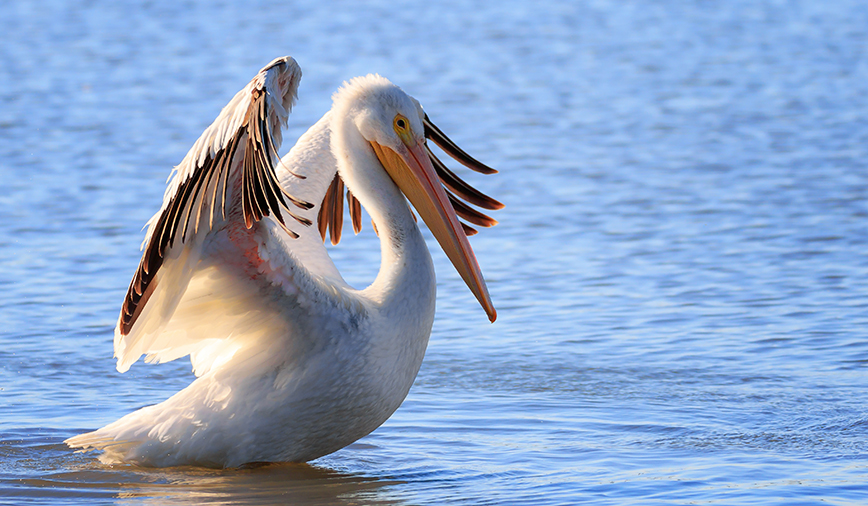I know exactly where I was the moment I got hooked on the sport of birdwatching, a.k.a. birding. I was standing on a gravelly point off of Wildlife Drive, the main thoroughfare through the J.N. “Ding” Darling National Wildlife Refuge on Sanibel Island, FL, peering through binoculars at a group of roseate spoonbills. Above them, high in a tree, a wood stork sat silently soaking up some sun. Off to the left, a reddish egret splashed in the shallows, flapping and stomping as it chased after a fishy lunch. A ways offshore, a flock of American white pelicans floated peacefully on the water’s surface.
“This is great,” I thought as I marked off the birds on my official Birds of Ding Darling Checklist, “not to mention a piece of cake.” Big white bird with a dark head and neck, check. Reddish bird with a distinctive foraging technique, check…
Down the list I went, quickly tallying 20 different species, all of which stood at least 2 feet tall. In addition, several had wingspans of 5 feet or more. I smiled to myself as a bald eagle soared overhead (check…21!) and thought, “Har! And here I’d always thought birding was going to be hard.”
That thought sustained me throughout the trip, even as I began treading into ever more unfamiliar territory. A quick trip to the bookstore at the Ding Darling visitors center and I was set with a copy of the compact, fanny pack-friendly Sibley Guide to Birds of Eastern North America. Waterfowl like the American widgeon and green-winged teal, mottled duck and American black duck were, almost, no problem with that baby tucked in my bag.
By Thursday of that life-changing week I was tackling shorebirds with reckless abandon, sorting out the differences between greater and lesser yellowlegs, long-billed and short-billed dowitchers, the sandpipers… My new friends at the Sanibel-Captiva Audubon Society were a big help. In fact, on their recommendation I headed back to the bookstore once more, for the Stokes Beginner’s Guide to Shorebirds. (Forget the fanny pack—this one fit in my back pocket!)
I’d like to say that the week ended on a high note, but unfortunately things began to get a little ugly when I took on a mixed flock of gulls, followed with a mystery flycatcher in a tree by our hotel.
Back home, spring migration that year brought marginal success. Scarlet tanagers and Baltimore orioles—the avian equivalent of flashing neon—weren’t too tough to pick out, but I missed out completely on a number of warblers. And, once the trees leafed out…argh!
Since that time, I’ve come to terms with the fact that I’ll never be a great birder. So-so, sure. Plus, I know I’ll never stop trying. But eye rings and wing bars, leg colors and bill lengths will always be the sorts of details that I’ll look to others for guidance on.
Yet they’re also why I’m so excited about the latest buzz in our local birding community. The American white pelicans are back! One of the species that helped hook me on birding years ago, these guys are huge, and unmistakable. Weighing in at more than 15 lbs. (for comparison, Canada geese average around 12 lbs.) and with a wingspan of 9 ft. (Canada geese are around 5 ft.) there’s no need to look for tiny particulars to make a positive i.d.
What’s more, anyone can go see them. They’re here, for a limited time, at the Dick Young Forest Preserve on Nelson Lake Rd. in Batavia. They first showed up on March 19th and, if past history holds, should be there in varying numbers until early or mid April before heading off to their breeding territories in the north and west.
Kane County Audubon has more information on this remarkable bird on their web site (www.kanecountyaudubon.org), along with an invitation I’d be silly to not pass along: “If you never leave the house this year to view another bird, make an effort to see these.” Bring some binoculars to appreciate these birds’ magnificence. And, in case you’re not already, be prepared to find yourself hooked on birding.
Pam Otto is the manager of nature programs and interpretive services for the St. Charles Park District. She can be reached at potto@stcparks.org or 630-513-4346.

